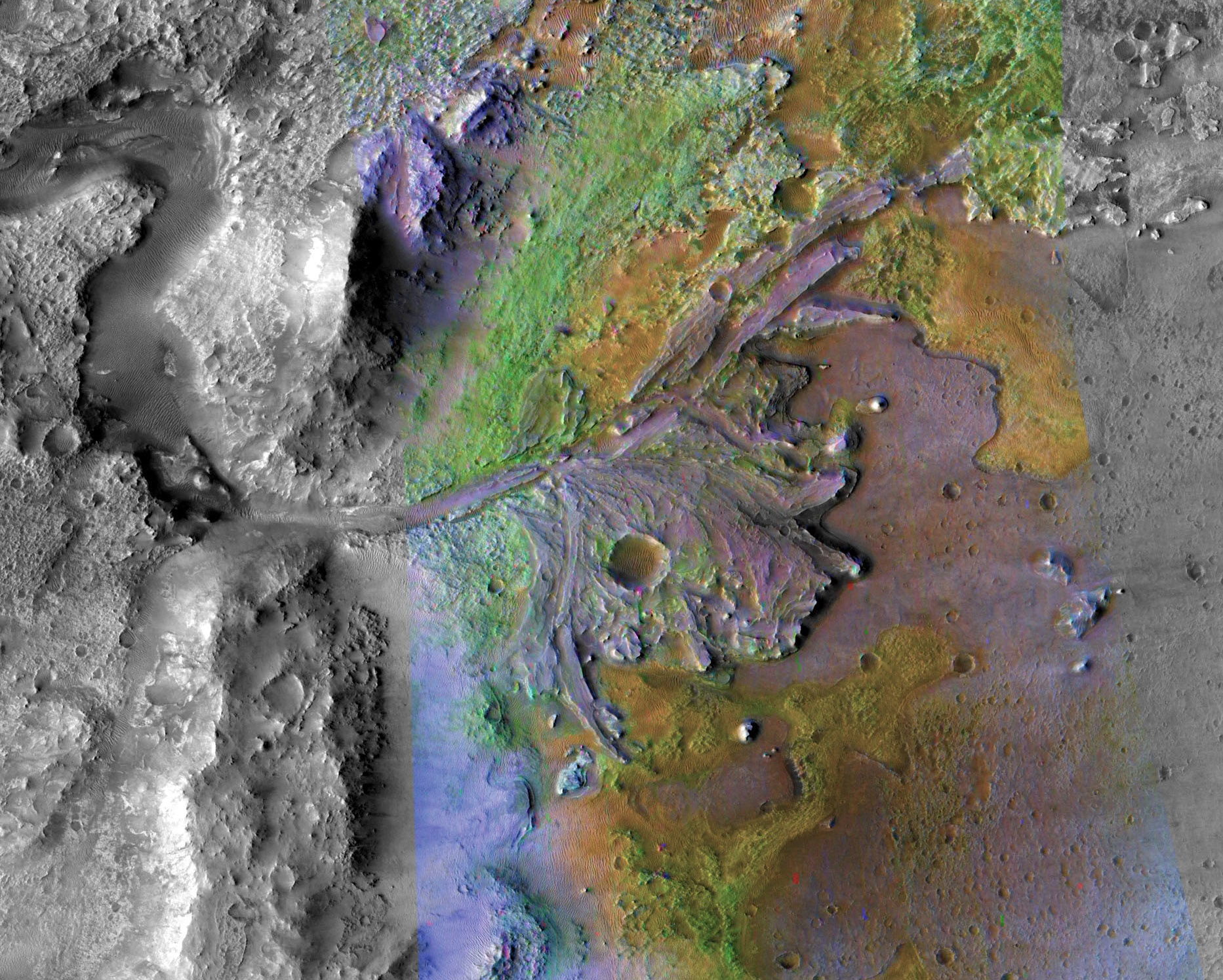This image of Jezero Crater, the landing site for the Mars Perseverance Rover, was taken by instruments on NASA’s Mars Reconnaissance Orbiter, which regularly takes images of potential landing sites for future missions. NASA chose Jezero crater as the landing site for the Perseverance rover because scientists believe the area was once flooded with water and was home to an ancient river delta.
Jezero crater tells a story of the on-again, off-again nature of the wet past of Mars. More than 3.5 billion years ago, river channels spilled over the crater wall and created a lake. Scientists see evidence that water carried clay minerals from the surrounding area into the crater lake. Conceivably, microbial life could have lived in Jezero during one or more of these wet times. If so, signs of their remains might be found in lakebed or shoreline sediments.
Image Credit: NASA/JPL-Caltech/MSSS/JHU-APL
这张Jezero陨石坑的照片是火星毅力号探测器的着陆点,由NASA火星侦察轨道飞行器上的仪器拍摄,该仪器定期拍摄未来任务可能着陆点的图像。NASA选择Jezero陨石坑作为毅力号火星探测器的着陆点,因为科学家们认为,该地区曾经被洪水淹没,是一个古老的河流三角洲的发源地。
Jezero陨石坑讲述了火星潮湿的过去断断续续的自然状态。35亿年前,河道溢出火山口,形成了一个湖泊。科学家们看到了水从周围地区携带粘土矿物进入火山口湖的证据。可以想象,微生物可能曾在一次或多次这样的潮湿时期生活在Jezero。如果是这样,它们的遗迹可能会在湖床或海岸线沉积物中被发现。
影像来源:NASA/JPL-Caltech/MSSS/JHU-APL








对宇宙的探索是人类初生的向往,自仰望星空的那一刻便决定了归宿在远方。
Make America Great Again
卢本伟牛逼